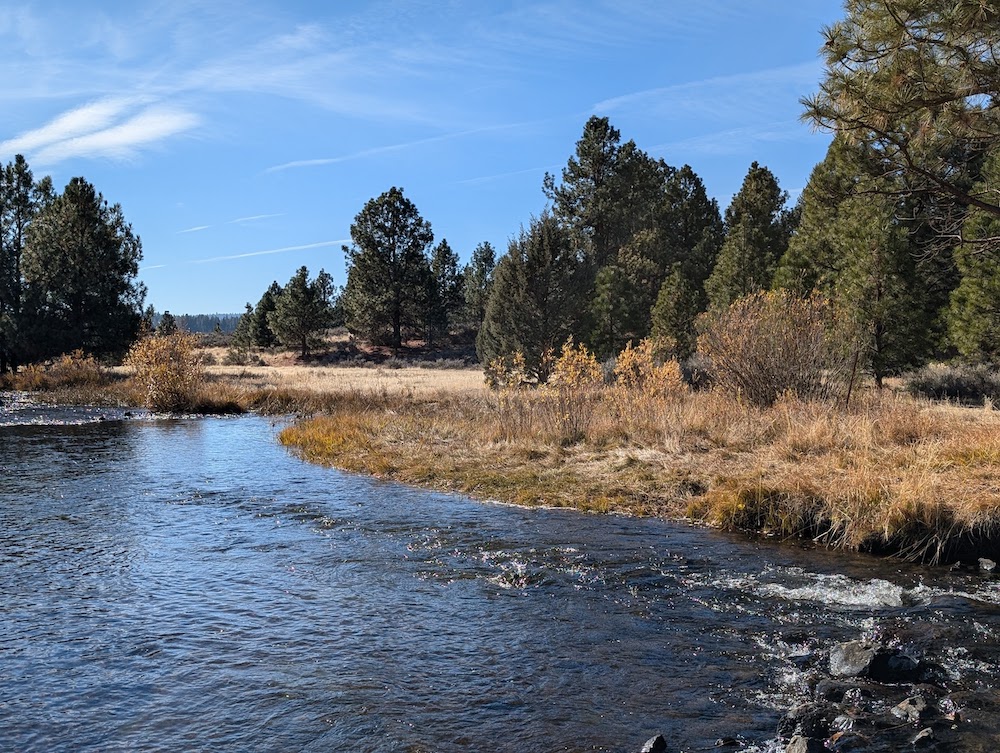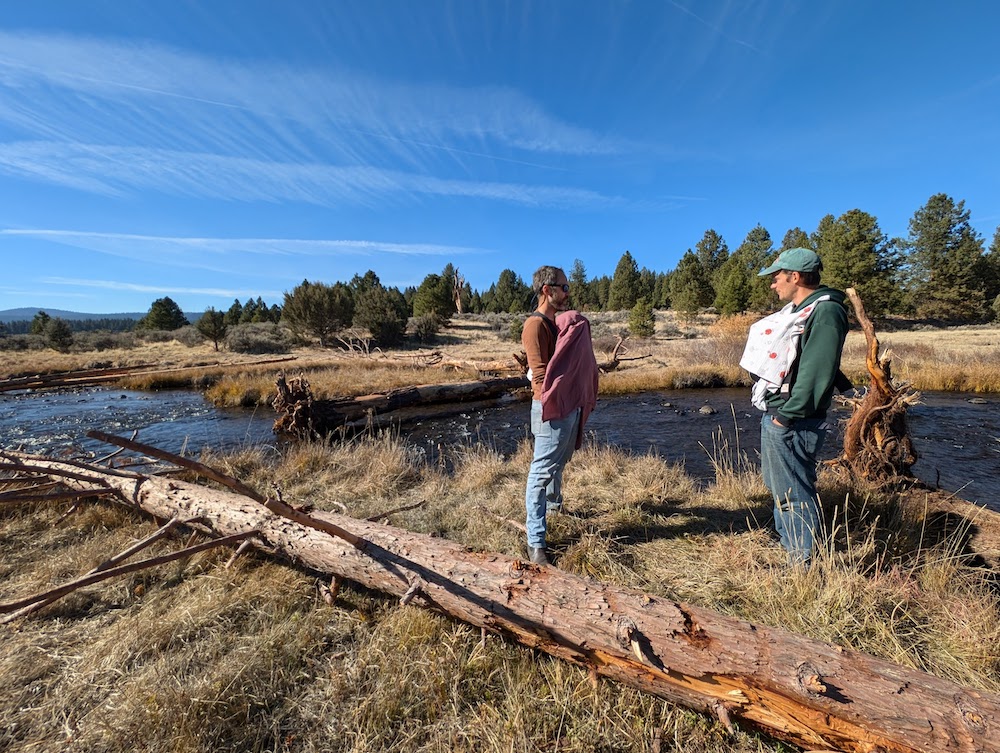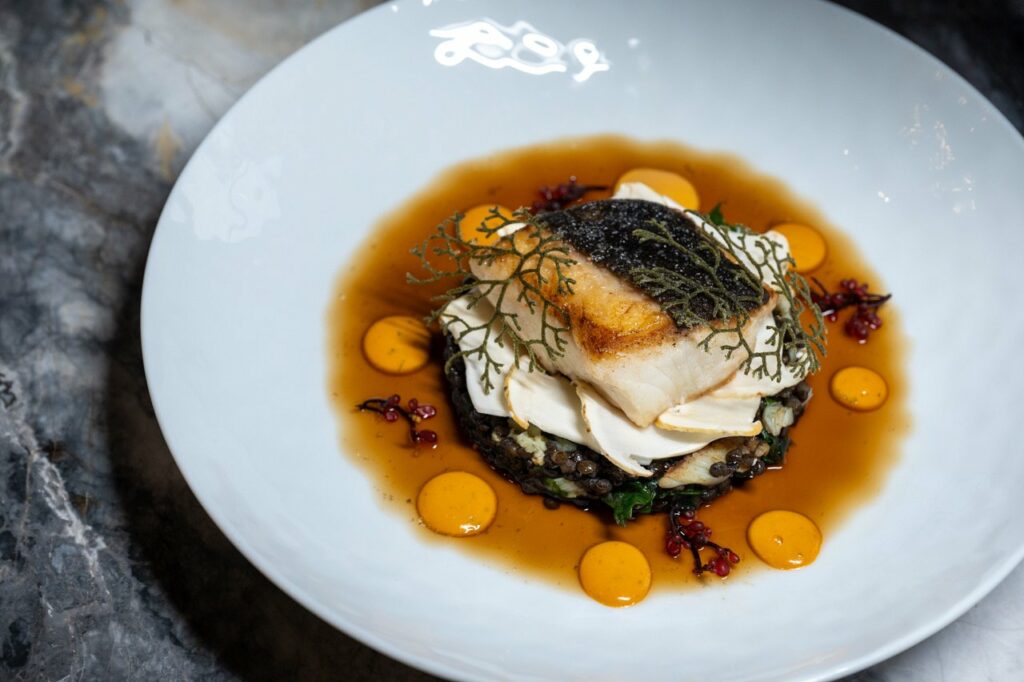
November 15, 2024 – I didn’t think this river trip would be emotional. I was wrong.
The mission to Spencer Creek and the Klamath River—outside of Keno, Oregon, just over the border from California—happened because, in a word, salmon.
The Klamath River’s dams were removed earlier this year, after more than a century in place.
“Dam removal is the best way to bring a river back to life,” Dr. Ann Willis, California director for nonprofit American Rivers, said at the time. “The Klamath is significant not only because it is the biggest dam removal and river restoration effort in history, but because it shows that we can right historic wrongs and make big, bold dreams a reality for our rivers and communities.”
Observers hoped the restoration of the waterway would allow indigenous salmon to return to their historic spawning grounds.
They didn’t dare dream it would happen so quickly.
But there they were—silver, gleaming, plump and vigorous, taking brave sprints through the rapids and shallows, twisting their tails and flopping on their side to release their eggs and cover them up with rocks.
When I saw them splashing, wriggling and generally thriving, their dorsal fins and speckled backs visible above the surface of Spencer Creek, I felt my chest opening up, and my eyes moistening.
Oregon Department of Fish and Wildlife Klamath Fisheries Reintroduction Project Leader Mark Hereford knows the feeling. He figured he and his team would spot maybe a few salmon this year. After all, other river restoration efforts have lasted months and years without the return of any fish.
“After more than 100 years, a couple days later they were back,” he says. “They’re incredible, these animals. It’s like they’ve never been gone. How is that a possibility? To say the least, they’re exceeding our expectations of what we thought. We knew they’d come up, just not in these numbers and distribution.”
On my river visit, I saw Hereford’s ODFW colleagues navigating the shallows in waders, counting jacks and adults, taking carcass samples to gauge age and heritage, and marking spawning beds (or “redds”).
“We’re definitely surprised,” one of them told me. “There’s been dam removals where it takes a ton of restoration and time [for wildlife to return] so we didn’t really know what was going to happen—and we didn’t want to predict anything and basically jinx it.”

When I tried to self-diagnose the surprise emotion I experienced, a few thoughts hit me.
I reflected on the hardships of Monterey Bay fishermen left without a salmon season for years straight now. (More on how to support them appears below.)
I remembered the vibrance of a river rally I attended in Sacramento last summer. There, on the steps of the state capitol, the largest ever collaboration between conservationists and indigenous groups trembled with heartfelt life force, as speeches, song and dance all honored how central river health is to tribes, fishermen and a thriving Golden State, spiritually and economically.
I stopped to consider two pairs of young parents who came along on our salmon run, babies strapped to the dads’ chests.
The parents admitted wondering, in the wake of the week’s presidential election, what kind of world they were birthing their babies into.
The fact that they could bring their newborns to see a type of stream that hadn’t existed during their parents’ lifetimes felt like a new beginning, only bigger.

If there’s a silver lining to the salmon crisis, it’s the motivation to embrace a wealth of alternative local seafood that are more than ready for a spot in your rotation.
Spotlighting various Monterey Bay catch is part of what I do with my work at Monterey Bay Fisheries Trust, which just celebrated a decade of pursuing its mission of “sustainable fisheries, resilient communities, and a healthy ocean for years to come.”
Our team taps local chefs, fisherfolk and home cooks for some of their favorite recipes using everything from sand dabs to halibut to rock cod.
Continuing to shop locally on the fish front is all the more important as the area’s fleet makes ends meet without salmon or—at least for now—crab, which will likely see its season begin Jan. 1 because of the danger of whale entanglements.
Here appear five points of inspiration for non-salmon yum:
Seaweed gremolata by Maria Finn
Maria Finn is a fisherwoman, forager, chef, surfer and author who we spotlight in the current print issue with “Edible Notables: Forage. Gather. Feast.” I plucked this formula for special attention because of its versatility, ease of prep and habit-forming flavor. Pro tip: I grabbed the seaweed from a poke bar.

Spanish Calamari Tapa by Chef Nestor Marin
Chef Marin first caught Edible’s attention with a surreal meal he cheffed at Frido Kahlo’s house in Mexico City, on behalf of the entire state of California. He’s proven himself masterful with wood-fired seafood at Saltwood in Marina, which glides under the radar of most gastronomes.
Monterey Bay Black Cod by Michael Chang
Chef Michael Chang makes Foray fly, with the mission of taking guests on a “guided tour of the Central Coast” by way of food, drink and ambiance in Carmel-by-the-Sea. Black cod can intimidate the uninitiated; recipes like this help demonstrate it’s a forgiving protein to prepare and a satisfying one to eat.

Pan Seared Halibut with Parsnip Puree and Broccolini by Isaiah Cortright
Chef Isaiah Cortright works magic with all sorts of seafood as executive chef at Meals on Wheels of the Monterey Peninsula, which partners with the Monterey Bay Fisheries Trust on its Community Seafood Program. With this dish, he makes a Central Coast classic fresh and accessible.
Monterey Rockfish Crudo by Klaus Georis
Georis, like Cortright, has partnered on MBFT’s Get Hooked Dinner series, at his destination Seaside spot Maligne. Following the last Get Hooked, Trust team members demanded he share his favorite way to prepare the Monterey Bay staple that is rock cod. Meanwhile, MBFT’s Local Catch Guide helps eaters find local fish markets to purchase fresh local rockfish.
Rockfish Chowder by Real Good Fish
It’s soup season, which inspires a bonus rockfish recipe, courtesy of CSF pioneers RGF.
About the author
Mark C. Anderson, Edible Monterey Bay's managing editor, appears on "Friday Found Treasures" via KRML 94.7 every week, a little after 12pm noon. Reach him via mark@ediblemontereybay.com.
- Mark C. Andersonhttps://www.ediblemontereybay.com/author/markcanderson/
- Mark C. Andersonhttps://www.ediblemontereybay.com/author/markcanderson/
- Mark C. Andersonhttps://www.ediblemontereybay.com/author/markcanderson/
- Mark C. Andersonhttps://www.ediblemontereybay.com/author/markcanderson/



